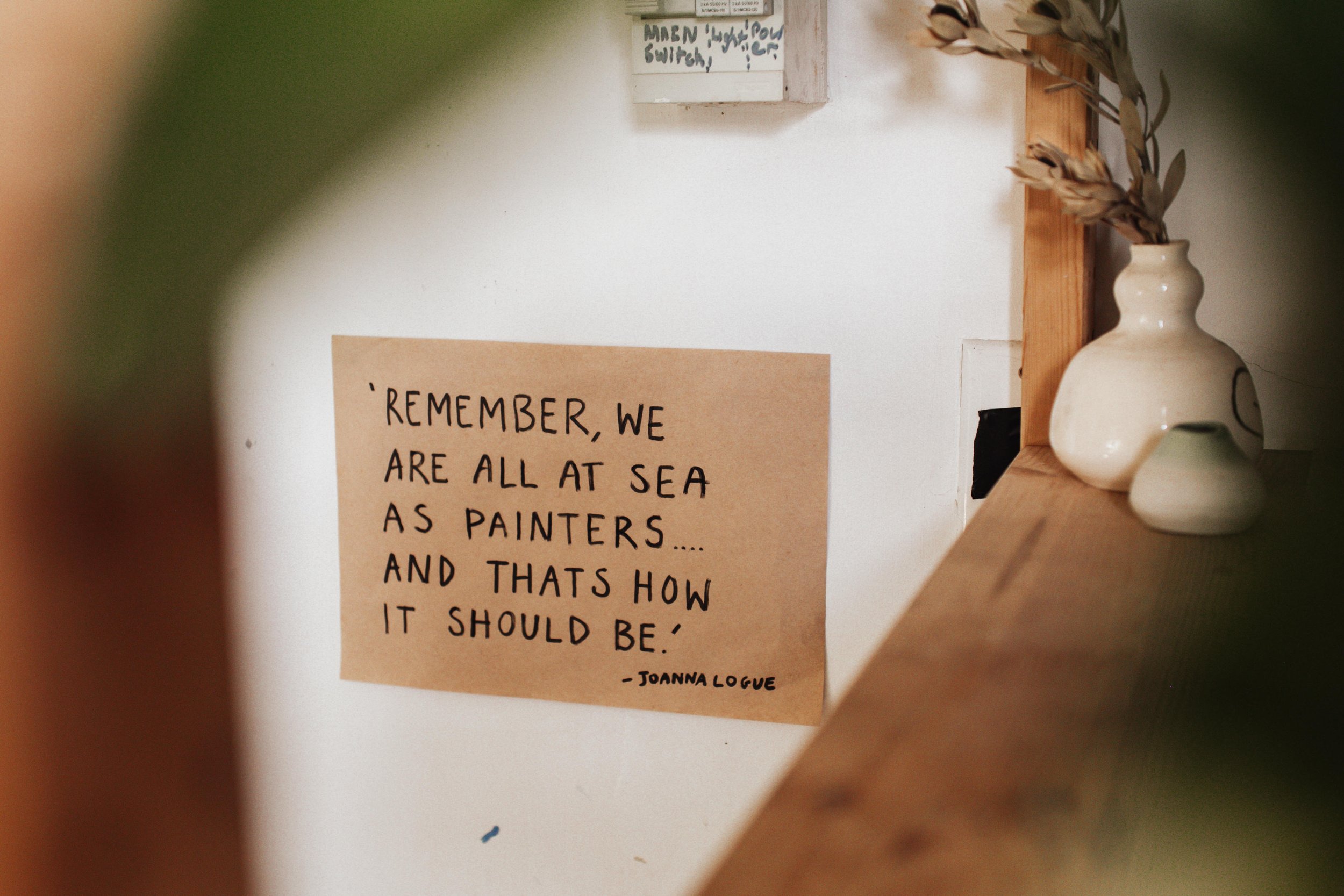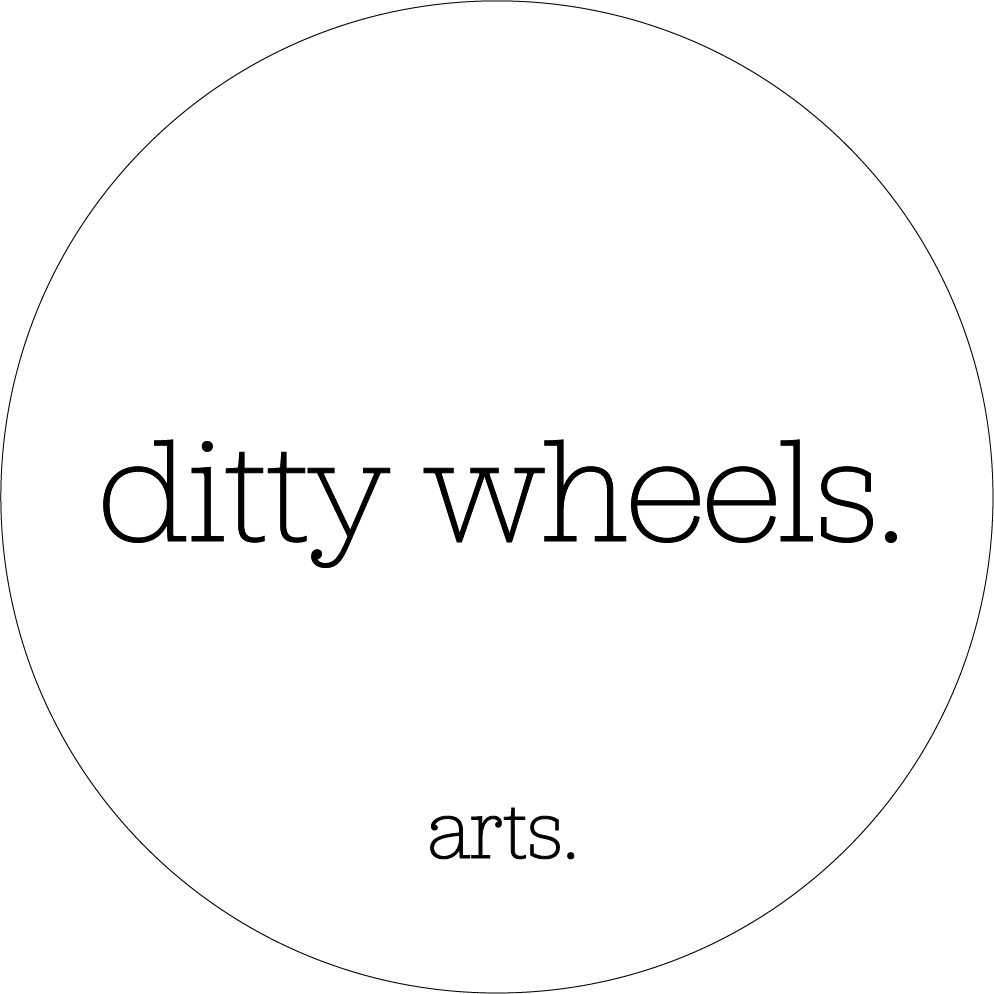Gemma Rasdall
I grew up on Garigal land, a drowned valley estuary north of Sydney known as Pittwater. Days were spent making marks on the ocean’s surface, with wind in the sails and tiller in hand.
After coming and going over the years, I am drawn back to her protected waters to shelter. For the past 6 years I have called a 35ft sailing vessel my home with my dog, Arkie. I am currently moored near the offshore community of Scotland Island and paint from a studio shed I use freely in exchange for regular gardening help (gotta love that old time swap\trade mentality).
My time here is fleeting now, change is blowing in from the south and the gravitational pull is so strong it's impossible to ignore any longer. Between scrambling in the studio for an upcoming show, I am preparing my boat for a journey across the ditch to Lutruwita/Tasmania where I will drop my anchor for the unforeseeable future.
I have become a master of the ‘slashie’ - sharing time between boat, studio, side hustles and underlying... always that anxious hum. Vibrating through my being, waking me up at all hours of the night to drag myself (and sleepy puppy) into the dinghy and across the inky ocean to the studio.
The dark hours of the morning are magic. Flitting between acrylics, oils, works on paper and stretched sailcloth canvas, always with some willow charcoal line work thrown in, my current body of work is diverse in its approach.
‘And All This Time the River Flowed Endlessly to the Sea’ is a cross section of real and imagined estuary landscapes across time. The works draw references from historical photos, my present homeport of Pittwater and future home on the River Derwent. The ‘boat’ continues to be a strong motif in my paintings, carrying the viewer (and myself) across watery washes of colour.
Through paint I am trying to make sense of the looming change ahead. A move driven by a longing for land with space, where hands still work the soil and apples grow in neat rows overlooking majestic isolated bays. A landscape where an artist such as myself might just afford to own a humble cottage by the water one day.




The Sound Of Silence - Acrylic and charcoal on sailcloth - 53 x 153cm - SOLD
An interview with Gemma Rasdall.
You are an extremely climate conscious painter whose practice has sustainability in mind. How does this translate in your paintings and how does this influence the materials you use?
In art and life I try to be as environmentally mindful as possible (living minimal on a boat has reinforced this over the past 6 years). Most of my canvases are made from recycled sails sourced or donated to me from my local Scotland Island community. The older the better, traditional Dacron sails that are well worn are the best to use for painting. As with using all recycled materials it is a labour of love - sourcing, scrubbing, soaking, cutting, stretching and priming the sails for painting is very time consuming. The resulting canvas complete with crinkles, stitching and scars from its former life on the sea and create a beautiful surface to make a painting on and I’m able to prevent the sails from ending up in land fill. A double win.
How does living on a boat offshore of Scotland Island impact your routine in terms of your art practice?
Its wonderful to be able to live so close to my subject matter and inspiration - I’m always a part of the landscape and am able to sketch and make small paintings from my yacht or dinghy. I especially love sailing up the Hawkesbury River for a few days solo and immersing myself in the feeling of place and intuitively making marks.
Most of my larger stretched paintings are made in my studio. I rent a little shed on Scotland Island, a short dinghy ride and 5 min walk up the hill from where I moor my boat. Mostly its an idyllic location to make art and only slightly inconvenient when it comes to transporting paintings via dinghy, especially in windy or rainy weather. It definitely limits the size of paintings I make and I spend more time than your average artist checking the weather forecast!
Last year you went on a residency to Château d'Orquevaux in France. What was that experience like and how did it shape your practice?
It was so amazing. A wonderful way to meet other artists from around the world and make paintings in a completely different landscape. I wish I had stayed longer, 2 weeks was definitely not enough time to try to capture the essence of the place and it’s history. I was also able to use this opportunity to travel more throughout Europe and visit some iconic galleries. The impressionist paintings at the Musee d’Orsay were a highlight for me and I think the colour palettes and looser mark making has influenced my practice in a positive way.
How do you approach a painting? Does it start with the landscape and evolve from there or do you already have a composition in mind?
Most of my paintings come from sketches, either made in the landscape or from my drone (if it’s an aerial composition). However more recently I have also been working from memory and my imagination in order to create more interesting compositions with less of a focus on reality and more of a focus on capturing a feeling or dream-like quality.
What keeps you inspired to paint landscapes?
The landscape itself constantly inspires me to keep painting. Whether its the colour of the water out my boat’s port hole or the shape of a tree on the shore, I’m constantly reminded of the beauty forms in nature and feel the urge to capture them. In parallel to this, I am also extremely dedicated to a lifelong career as an artist and the drive to continue to grow as a painter requires regular practice if I am going to succeed. It’s this more than anything that gets me up and into the studio everyday.
Your use of sailcloth as a painting surface is quite unique. Where did this idea come from and did it require a lot of experimentation?
This idea first came to me at 17 when I was working on my HSC Majorwork for high school. The body work was mainly based on boats, (I grew up sailing dinghies on Pittwater every weekend) and and I happened to have some old Flying Eleven sails lying around home that I decided to cut up and paint on. I loved the texture of the cloth and the stitching details and continued to play with this medium after leaving school. It has required much experimentation over the years and I still continue to change and develop the way I use the cloth to ensure it’s archival quality as an artwork. I am really fussy about what sails I use to paint on nowdays. The newer cloth on contemporary boats is no good, I’m always on the hunt for really old classic yacht sails that are worn down and weathered. It really is a labour of love - sourcing, cleaning, stretching and priming the sails to paint on - but the result is worth it.
Return to top
